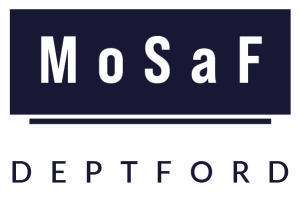The Triangular Slave Trade: What was it and how did it start?
Deptford played a key role in one of history’s atrocities: the triangular, or trans-Atlantic, slave trade, which spanned three centuries and had a global impact still keenly felt to this day. So why do many Britons know so little about it, its abolition, and the legacy of the enslaved people who fought for freedom from it?
In our three-part series, we’ll shed light on the topic, giving historical context to Deptford’s involvement and our campaign to build a Museum of Slavery and Freedom on the banks of the Thames.
~~~
The triangular slave trade took place between the 16th and early-19th centuries. That’s from Shakespeare’s London, all the way through the English Civil War, the French Revolution, and into the Georgian era of Jane Austen.
The trade is called ‘triangular’ because the route taken by ships formed a rough triangle. Traders left the British Isles with goods like clothing, guns, and alcohol, then arrived on the west coast of Africa to sell these items in exchange for enslaved people. These people came from many ethnic groups throughout Africa and from all walks of life – from farmers and soldiers to merchants and priests. Many were kidnapped and forced into slavery. Others entered enslavement by different routes, such as being prisoners of war.
Enslaved men, women, and children were then transported in horrifying conditions across the Atlantic Ocean. It’s thought there were uprisings on at least 20% of slave ships. However most arrived in the Americas, where the people they had carried were sold into hard, cruel labour, producing goods to be shipped back to the UK – like sugar, tobacco, and rum.
This triangular route didn’t spring out of nowhere. Human trafficking had existed in Europe – and globally – for millennia. When, in the 15th century, Portuguese traders ventured into West Africa to establish networks there, they continued their policy of enslavement. At first, enslaved Africans were taken to Europe, but eventually the triangular route took hold, when European interest in the Americas increased.
Many of the ships that sailed the triangular trade route were built in Deptford, which had an important Royal Dockyard in what is now known as Convoys Wharf. In fact, the very first British ship to embark on the journey set off from Deptford. A Museum of Slavery and Freedom here would not only educate visitors on Britain’s role in the slave trade, it would also serve as an important memorial to the lives devastated by activities that took place in Deptford.
Britain became rich as a consequence of the triangular slave trade. It wasn’t just those directly involved in the purchase and selling of people who profited; speculators made their fortunes investing in the trade without having stepped foot in either West Africa or the Americas.
This money was pumped into an evolving Britain, fueling the Industrial Revolution in the 18th and 19th centuries, which laid the foundations for the country we live in today.
~~~
Next month, we’ll look into some key events related to the triangular slave trade, including Deptford’s continued links to the trade.
As ever, if you’re interested in learning more about our campaign to build a Museum of Slavery and Freedom in Deptford, keep an eye on our ‘What’s On’ tab – and sign up to our quarterly emails here.

2 responses